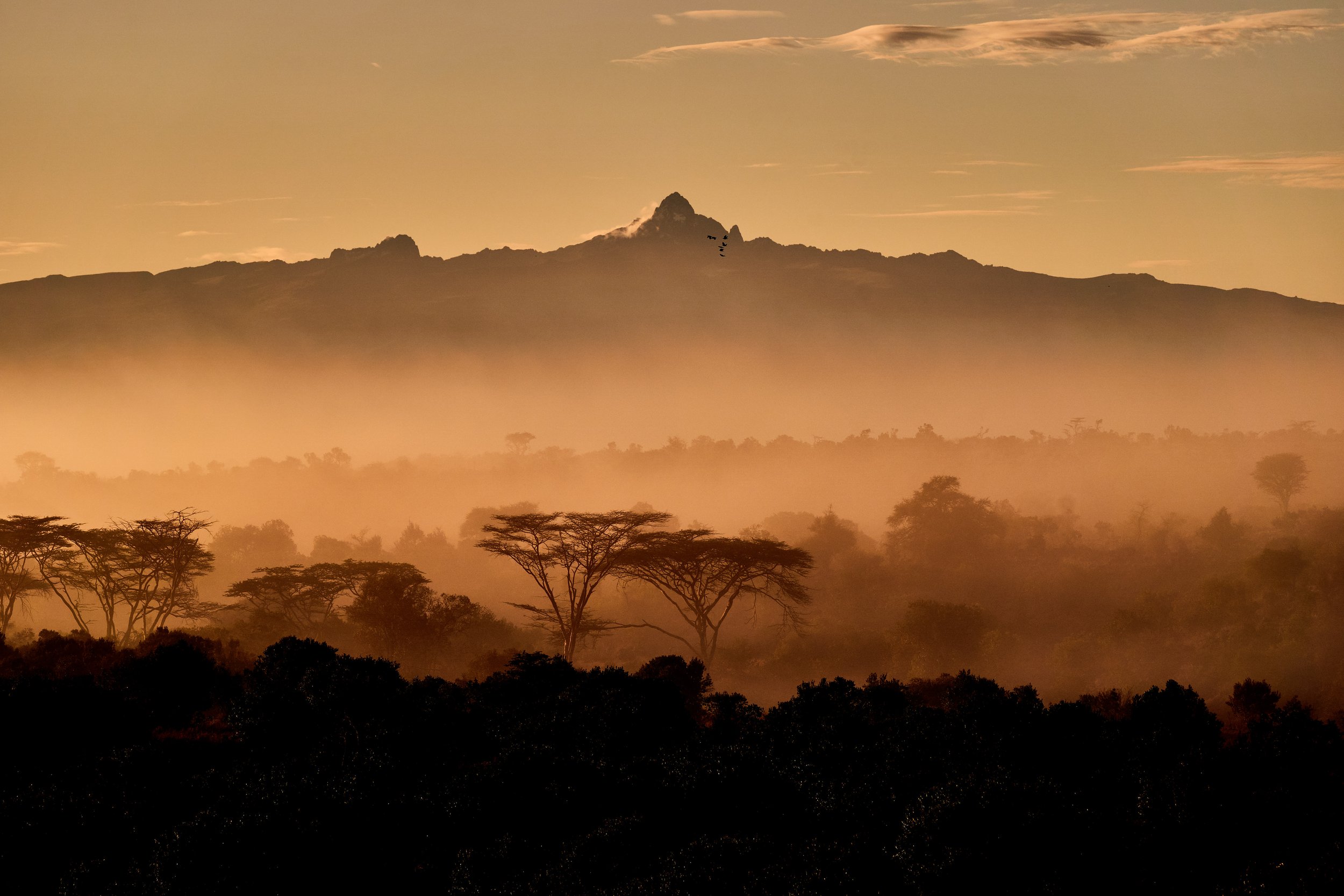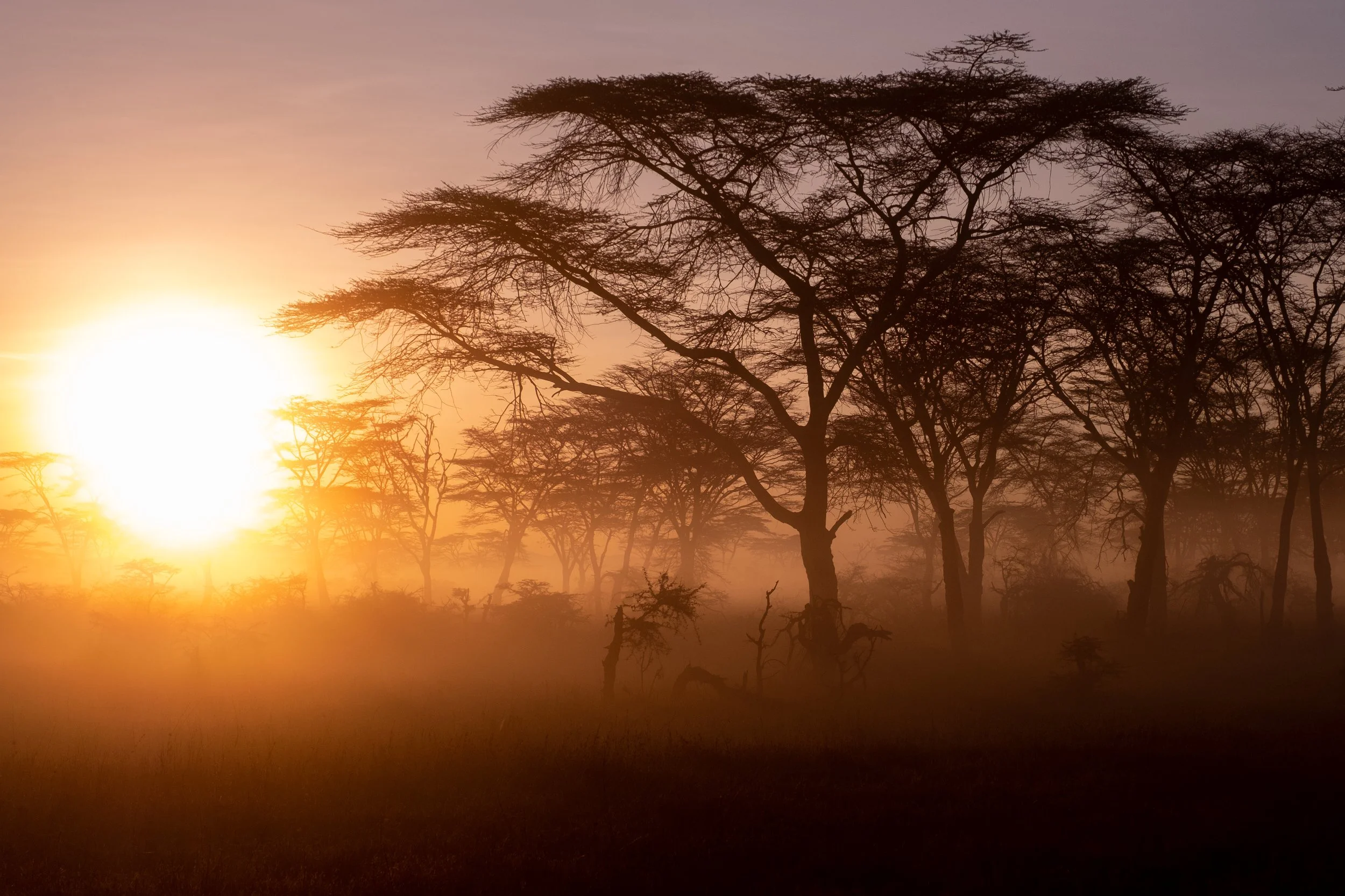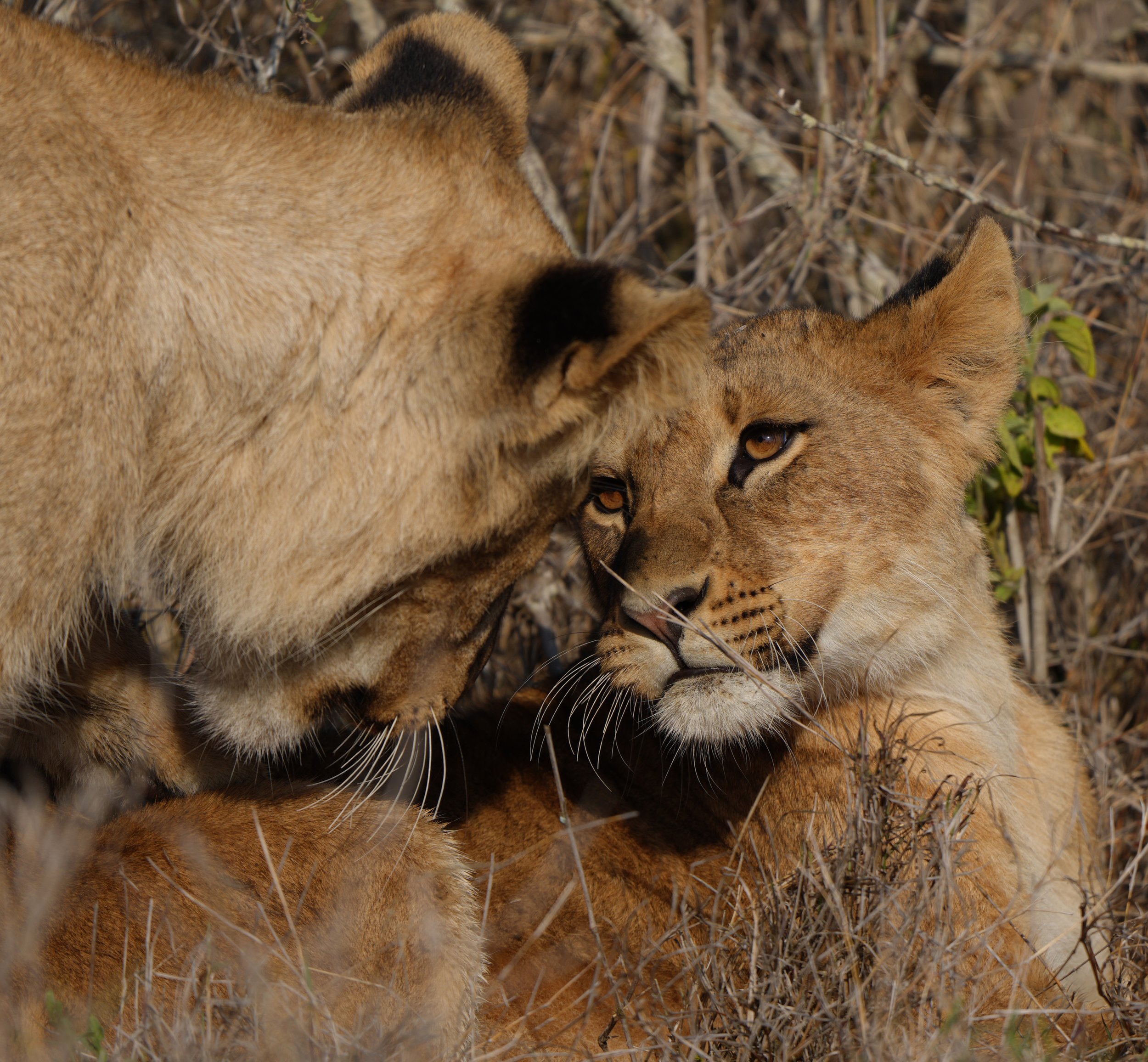
Segera Rhino Sanctuary

HERE & NOW.
Central Kenya is perfect rhino country and was once home to thousands of rhinos before the species was decimated. Over the last few decades, rhinos have been poached almost to the point of extinction.
Black Rhino populations have declined 96% over 20 years and are now classified as critically endangered.
Our plan is to remove boundaries and connect large landscapes together (preserving wildlife corridors) to create a huge, interconnected rhino habitat.
Positioned at the geographical heart of Kenya, Segera Rhino Sanctuary was the catalyst in a large-scale initiative to create an interconnected area of private and community conservancies to become one of the largest rhino sanctuaries in the world, where rhinos can safely return to Central Kenya’s vast savannahs.
Protecting rhino is both incredibly intense – requiring highly trained and motivated rangers – and extremely expensive - but by joining forces and sharing expertise and resources, we are able to significantly reduce costs and create a financially viable and sustainable operating model for the long-term creating win-wins for communities, foster socio-economic development and preservation of biodiversity in line with the UN Sustainable Development Goals.

PHASE 1: Segera Rhino Sanctuary
Every step along the way was meticulously identified. Social and economic requirements have always been a priority, ensuring a holistic approach that enables local communities to benefit.
In its critical location in Central Kenya, Segera Conservancy received its founding population of Eastern Black Rhinos in May/June 2025.
Segera follows a sustainable enterprise model focused on strengthening rural economies, engaging communities and contributing to regional and national development, ensuring a safe, productive wildlife landscape through private sector leadership, collaboration and investment focused on building and enhancing social and natural capital in the region.
Local communities are at the core of the rhino initiative, expanding opportunities for learning and employment, with women’s empowerment being at the forefront of conservation efforts and rhino conservation being supported by female ranger academy graduates, the first female Rhino ranger units in Kenya.
The ZEITZ foundation is also developing a new Kifaru Learning Centre alongside the rhino sanctuary, an educational facility serving both adults and children from rural communities in the area, with programs to learn about wildlife and conservation, providing opportunities for community members of all ages to go out into the field and experience initiatives themselves, inspiring Kenya’s next generation of conservation leaders.
Segera Rhino Sanctuary is recognized as an international trailblazer in conservation,
highlighting a new way to preserve and conserve
with culture and community being at the core.
Our first step was the formation of Segera Rhino Sanctuary, over 20,000 acres
within Segera Conservancy in Central Kenya.

PHASE 2: Central Kenya Expansion
Segera Conservancy is one of the most central conservancies in Kenya, and one of the last connected areas of biodiversity; sharing migratory corridors and boundaries with other important areas of wildlife habitat. Providing safe haven to some of the rarest and most endangered animals on the planet, Segera Conservancy has to be protected and sustained to survive long-term.
Now moving into Phase 2, Segera Rhino Sanctuary will connect with El Karama and other existing conservancies and rhino areas to grow the Rhino Sanctuary - eventually up to 840,000 acres. This plan is embedded in the Kenya Rhino Expansion Plan (KRRE) for the central region of Kenya.
Both Black and White Rhino serve as “umbrella species” - meaning all other flora, fauna and wildlife living alongside them benefit from rhinos being protected in the same habitat. This vast new Rhino Sanctuary will create and safeguard a complete ecosystem for significant populations of rhino and other endangered species, a win-win for Kenya’s wildlife, communities and future.
Without Segera Conservancy, this vital area of biodiversity will be lost for the future, the land will degrade, and its wildlife will be lost forever.
WE NEED YOUR HELP.
Nature is in danger, and we need to find urgent solutions, but rhino conservation is very expensive. To protect rhino from the constant risk of poaching requires a highly intensive and well-coordinated spectrum of protective assets.
The estimated average conservation cost per rhino (in a founder population) is around $25,000 per year, which is simply not sustainable. By creating a project of this scale, synergies with other conservancies and securing long-term support from philanthropic friends and businesses, we believe we can reduce this amount by more than half, to $10,000 per rhino per annum.
The size and scope of this conservation initiative will drastically reduce hard costs and increase impact, and by pooling resources we can make rhino conservation more manageable and more sustainable. What is different about this proposal is that we will be using already existing conservation areas (whose costs to date have already been funded privately), therefore the philanthropic funding requirement is much lower than starting from scratch.
The Kenyan Government are fully committed to conservation initiatives and wildlife tourism in the country (the second largest income generator). This initiative will not only secure the future survival of Kenya’s biodiversity, but it will also act as a win-win for Kenya’s communities, promoting female empowerment through the employment of at least 50% women in security, land and wildlife management roles, driving economic progress and creating new conservation economies in line with the UN SDG’s.

THE 4C PHILOSOPHY
We believe that sustainable ecosystem management – and ultimately steps towards a healthy planet – can be achieved through a holistic balance between Conservation, Community, Culture and Commerce: what we call the ‘4C’s. These 4Cs are the foundation of all of our initiatives, creating sustainable win-win scenarios for both nature and communities.
Conservation
Biodiversity is life. Conservation is safeguarding this biodiversity and the integrity of the ecosystem services it provides which support global needs. We support the sustainable use of natural resources that safeguard the integrity of the planet. Activities in this dimension address issues of biodiversity and ecosystem services as well as management of energy, water and waste, land planning and carbon impact reduction, amongst others.
Community
People matter; it is the right of every person to have their basic needs met and enhancing the well-being of communities is a fundamental obligation of all. We support activities that enhance the well-being of communities they belong to or interact with. Activities in this dimension address fair working conditions, community relations, social infrastructure, social accountability, capacity building and support for small and medium enterprises.
Culture
Our world is culturally diverse. Celebrating commonality is what nurtures understanding. Respecting difference is crucial to our future. Our ability to innovate and evolve is what makes us uniquely human. Drawing on our uniqueness we enrich each other and contribute to a greater common good.
We strive to strengthen intercultural relationships and understanding, safeguarding cultural heritage while raising awareness of cultural diversity. Activities in this dimension address issues of cultural heritage site protection, cultural heritage promotion and awareness, respect, and cultural exchange.
Commerce
Uncontrolled, commerce has had negative impacts. Conducted in a holistic and sustainable way, commerce can be a positive contributor. Trading and the accumulation of wealth have been central to the development of civilizations over thousands of years and are likely to remain so. This dimension addresses the sustainability of commercial operations recognizing the intricate link between profit, natural and social assets. Viable businesses offer the capacity to provide a source of income for people that depend on it, as well as long term investment back into the initiatives in each of the ‘4C’s.

ONGOING INITIATIVES
The ZEITZ foundation focuses heavily on female education and empowerment, and in 2019 launched East Africa’s first ever All-Women Anti-Poaching Ranger training program and academy. The six months intensive training program was a huge success and was nationally celebrated. The academy has now graduated 2 cohorts of women rangers.
FEMALE RANGER PROGRAM
CANINE ANTI-POACHING UNIT
With our wildlife under constant threat, the ZEITZ foundation’s anti-poaching team are in action 24/7 to protect our precious wildlife. With 50,000 acres of land to cover, in addition to neighboring community land, one of the most accurate tools in tracking poachers on foot are the Canine K9 Unit.
The K9 team: Stevie, Mickey and Lindsey help us protect Segera Conservancy’s wildlife from poachers, as well as providing tracking services and community support for our local area and neighboring conservancies.
“THE TREE OF LIFE”
In 2020 The Zeitz Foundation launched the “Tree of Life’ reforestation project, with the aim of restoring natural, indigenous forests back onto the savannah after suffering mass deforestation in Kenya and devastating erosion as a result. With a total of 3 million indigenous tree species being planted over the next 10 years the conservancy is returning to an ecologically balanced natural paradise, while also recruiting the forest restoration teams from the surrounding communities.
Figure 3: Near-Future Projection of the “Tree of Life” reforestation project, comprised of over 1 million indigenous Acacia trees, being planted within and outside the rhino-shaped area.
About the ZEITZ foundation
In 2008, Jochen Zeitz founded the non-profit ZEITZ foundation to support sustainable projects promoting an inclusive, holistic paradigm of conservation that enhances livelihoods and fosters intercultural dialogue. Zeitz wanted to create conservation and culture-based ventures with the goal to not only “do less bad” but actively “do more good” and to have a net positive impact by being restorative for nature and allowing bio- and cultural diversity to be preserved. Educating over 1,800 children in Kenya, the ZEITZ foundation has built six schools awarded for their innovative eco-practices and rainwater harvesting. The ZEITZ foundation is also a strong believer in female empowerment and has been at the forefront of promoting a paradigm shift to support women. Established by the ZEITZ foundation, the SATUBO Beading Group empowers local women with their own business venture as well as promoting inter-tribal peace. In 2019, the ZEITZ foundation launched its first vocational training center, the All-Women Anti-Poaching Ranger Academy, breaking down the boundaries of a male-dominated industry. Two classes of female rangers have now graduated (and found employment) successfully, after completing intense recruitment and training programmes at the academy.
The Long Run
Initially created as a ZEITZ foundation initiative, The Long Run is a membership organization of nature-based tourism businesses that are committed to driving sustainability through the ZEITZ foundation’s holistic 4C philosophy. Now safeguarding over 23 million acres of nature in 22 different countries, touching the lives of 750,000 people and protecting over 30,000 plant and animal species, The Long Run has become the largest organization of its kind worldwide. With its successful 4C blueprint for creating sensitive, sustainable land, community and eco-tourism co-existence, Segera Conservancy was one of the founding Long Run Destinations.











